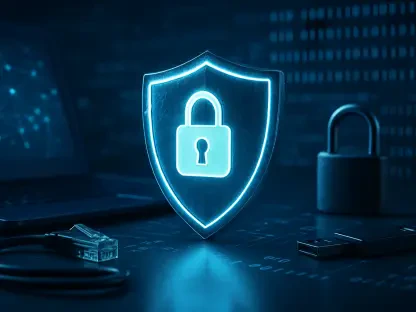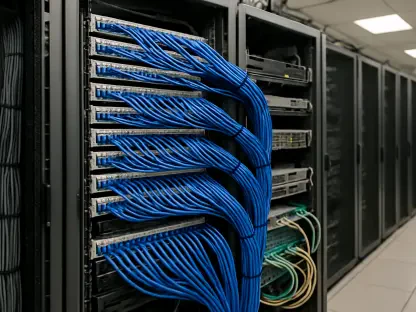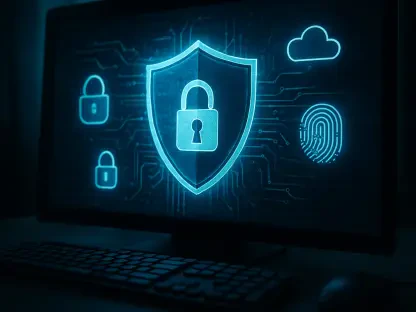Today’s digital landscape has seen an increased reliance on remote access tools and Internet of Things (IoT) devices within corporate environments. While tools like TeamViewer and AnyDesk enhance productivity by facilitating seamless operational processes, they inadvertently introduce security vulnerabilities that are often underestimated. Relatively easy to deploy and manage, these tools can be a double-edged sword, as their simplistic nature sometimes leads to overlooked security measures. Cybercriminals, equipped with sophisticated techniques, find these vulnerabilities inviting, exploiting them to access sensitive corporate data and systems. A balance between convenience and security is paramount to protect organizational assets against such threats.
Understanding the Security Risks
The Dual Nature of Remote Access
Remote access tools are pivotal in enabling flexible work arrangements, proving essential during the pandemic and beyond. Their widespread use aids in maintaining productivity, yet they serve as potential gateways for cybercriminals. The dual nature arises from the ease with which they can be implemented. However, the speed and simplicity of deployment often lead to inadequate security configurations. Tools that enable quick access to corporate networks can become doorways for attackers to bypass conventional defense mechanisms. Consequently, organizations face the challenge of ensuring security without impairing functionality.
IoT Devices as Vulnerability Points
IoT devices, including various sensors and smart devices integrated into networks, are increasingly commonplace. Their ability to collect and transmit data autonomously is invaluable for decision-making insights. Yet, these devices often lack robust security protocols, leaving them susceptible to breaches. The lack of attention to securing IoT devices results in vast attack surfaces within networks. Cybercriminals leverage this by identifying entry points that are improperly safeguarded. Hence, the challenge rests in fortifying these devices without hindering their operational utility. Consideration of security parameters is critical during the installation and integration of such devices.
Balancing Functionality and Security
Implementing Multi-Factor Authentication
Multi-factor authentication (MFA) emerges as a critical component in safeguarding remote access tools. By adding an extra layer of security, MFA significantly reduces the risk of unauthorized access. However, many organizations still overlook its implementation, prioritizing ease of access. This oversight leads to weak points in security defenses, which cybercriminals are quick to exploit. Challenges arise due to user resistance or logistical constraints in integrating MFA with existing systems. Educating users on the importance of MFA and streamlining its use can mitigate these concerns, offering a stronger deterrent against unauthorized access.
Zero-Trust Network Access Strategies
Adopting a zero-trust approach involves assuming that threats exist both outside and inside the corporate network. By enforcing strict access controls and monitoring user behavior, organizations can effectively identify and neutralize threats that bypass exterior defenses. Zero-trust network access strategies challenge conventional security notions by discontinuing assumptions of inherent trust. While this strategy proposes a significant shift in security dynamics, its adoption demands adjustments to existing frameworks. The focus is on seamless integration with current security measures to promote efficacy without hampering operations.
The Evolving Role of Cybercriminals
Adaptive Tactics of Attackers
Cybercriminals are known for their adaptive techniques, constantly evolving their attack strategies to bypass security measures. When initial attempts are unsuccessful, they promptly pivot to alternative vulnerabilities within network infrastructures. This proactive approach demands organizations to predict potential threat vectors and develop preemptive policies. The arduous task of outsmarting attackers involves envisaging their moves and fortifying defenses accordingly. Developing intelligence-sharing platforms among industries can aid in understanding these strategies, enabling a collaborative environment where insights can guide effective protective measures.
RDP Exploitation: A Case Study
A notable case involving the Akira ransomware group exemplifies sophisticated attack methods. The exploitation of vulnerabilities in AnyDesk, coupled with unprotected webcams, shows how attackers circumvent defenses. Using Remote Desktop Protocol (RDP), they navigated networks to maintain access and deploy ransomware payloads through insecure IoT devices. This attack highlights the importance of securing remote access points, as well as the imperative need to monitor IoT devices comprehensively. Increasing complexities in attack vectors demand swift adaptations in defensive strategies to safeguard against such breaches, illustrating the necessity for continuous vigilance.
Reinforcing Network Security
Importance of Regular Network Monitoring
Consistent vigilance through regular network monitoring allows organizations to identify vulnerabilities before exploitation occurs. Comprehensive scans and assessments pinpoint potential threats within networks, enabling prompt resolutions. Focus on holistic evaluation promotes effective simulations that derive actionable insights regarding security posture. The implementation of real-time data analytics tools provides an understanding of network dynamics, aiding in the identification of aberrant behaviors. Encouraging regular security drills among personnel increases responsiveness during actual incidents, facilitating swift resolutions and heightening overall network integrity.
The Value of Security Education
Expanding security training programs to encompass non-traditional attack vectors reinforces organizational preparedness. Educating staff on the potential risks associated with IoT devices and remote access tools strengthens security awareness. Regular workshops focusing on the latest cybersecurity trends and tactics equip employees with critical insights. Integrating security consciousness throughout corporate culture promotes a vigilant mindset that can collectively combat cyber challenges. Continuous learning emerges as a vital defense against attackers, augmenting the ability to detect and deter threats effectively.
Frameworks and Best Practices
Adoption of Global Security Frameworks
Organizations globally are embracing security frameworks like the UK’s Digital Security by Design initiative, urging security prioritization during device and tool design phases. However, full alignment with these frameworks requires a time-intensive commitment, demanding strategic changes. While these modifications can slow immediate operational processes, they culminate in long-term benefits that outweigh initial constraints. Systematic reviews and iterative enhancements are part of the growing adaptation process, drawing important lessons from implementations across sectors. Emphasizing collaboration ensures a unified front in the cause of heightened security standards.
Comprehensive Patch Management
Adhering to thorough patch management protocols seals exploitable loopholes within networks. Regular updates and patches counter vulnerabilities before they can be used by cybercriminals. This proactive stance highlights the importance of conducting regular audits within systems. Embracing patch management as an ongoing process rather than a reactive measure encourages comprehensive security practices. Collaborating with third-party vendors to ensure timely updates fosters a dynamic environment where security is a continuous focus. By embedding patch management into regular operational workflows, organizations can effectively mitigate potential threats.
Shaping Future Security Narratives
In today’s digital world, there’s a growing dependence on remote access tools and Internet of Things (IoT) devices within corporate settings. Programs like TeamViewer and AnyDesk are designed to boost productivity by ensuring smooth and effortless operational processes. However, they unexpectedly introduce security vulnerabilities that organizations often underestimate. Though these tools are easy to deploy and manage, their user-friendly design can lead to important security measures being overlooked. Cybercriminals, with their advanced skills, find these vulnerabilities enticing and exploit them to gain unauthorized access to sensitive corporate information and systems. This highlights the urgent need for a careful balance between convenience and security to safeguard organizational assets. Companies must prioritize implementing robust security protocols alongside these tools to anticipate and defend against potential cyber threats, ensuring that they continue to reap the benefits of remote access without compromising the security of their critical data.









